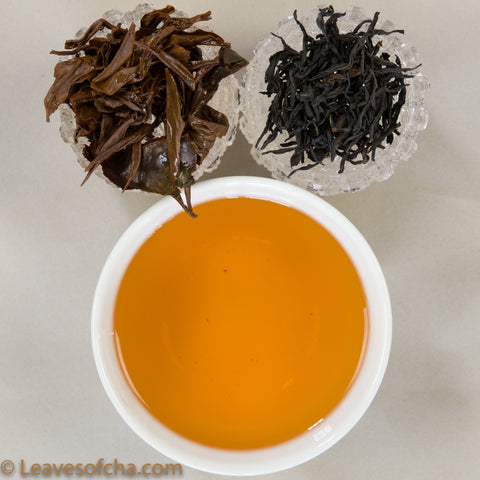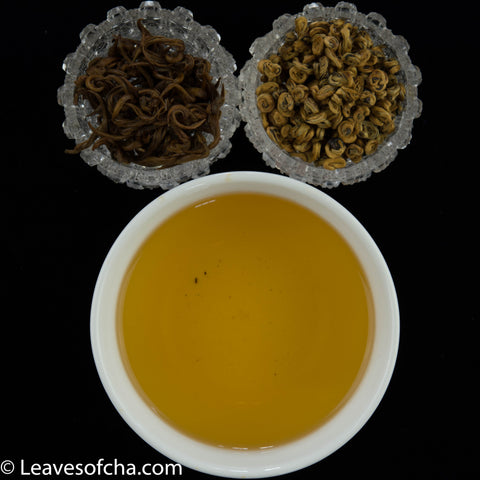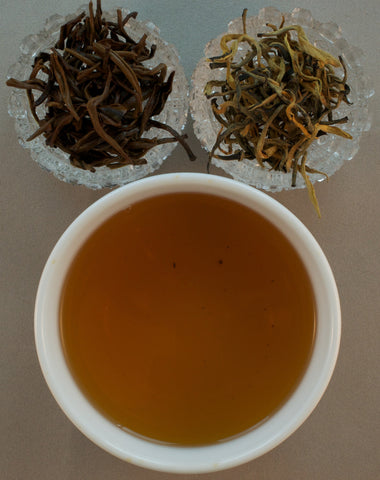This purple tea is from one of the three unique purple cultivars. Called variously “Purple Tea”, “Purple Bud”, or “Zi Cha”, it is a naturally occurring mutation of Camellia Sinensis Assamica. It grows all over the Yunnan Province but accounts for less than 1% of the cultivated Assamica produced there. The purple (or russet in my translation of Lü Yu) color is a result of the tea plants producing anthocyanin to combat the humid summers and high levels of ultraviolet light at the higher elevations.
This Zi Cha is a delicious tea and is another example of the wide variety of black teas from Yunnan. I simple can’t get enough of purple tea.
Named in honor of Prince, who tragically passed away in 2016 at 57. The rarity of this cultivar reflects the rarity of musicians like him. And, of course, there is the whole purple thing. Have a sip and reflect on the artistry of the tea and the musician. Better yet, listen to some Purple Rain or 1999 or whatever Prince musical incarnation suits your fancy while sipping this tea.
Provenance:
-
Origin: Mangjing Village, Jing Mai Mtn., Lancang county, Simao, Yunnan
-
Grower/Teamaster: Mangjing Village Coop
-
Elevation: 1600-1700 meters
-
Harvest Date: Spring 2023
-
Cultivar: Purple Varietal of Camellia Yunnan pu-erh tea, aka Zi Cha
-
Plucking Standard: 1 leaf 1 bud
-
Processing Notes: Fresh purple leaves processed into a flat needle style
-
Nickname: Purple Needle, Zi Cha. The “Purple Rain” nickname is a tribute to Prince, who crossed over on 4/21/2016.
-
History/Pedigree: Lü Yu, in his “Classic of Tea” says “Tea that grows wild is superior; garden tea takes second place. Whether grown on sunny slopes or in shady groves, the best leaves are russet.”
Brewing Suggestions1:
-
Water: 190˚-200˚F
-
Tea: 2g per 4oz of water (about a level 2 tsp2)
-
Infusion: 3-5 minutes. Two infusions at shorter infusion times.
Tasting Notes:
- Stimulating mouth feel with hints of citrus, caramel, and sugarcane. Floral aroma.
1 Brewing suggestions are just that. Try it the suggested way then experiment. In this case I suggest first experimenting with the infusion time. I found the sweetest profile at 4 minutes. I do a second “1/2” infusion only on the shorter first infusion times as I found the astringency starting to creep past my taste preference on the longer times. Some tea drinkers like to use slightly hotter and longer times for each subsequent infusion.
2 Weighing your tea is always the best way to control your dosage. I provide approximate volume measures for convenience but they can be problematic due to the variance in tea leaf shape and size. It’s best to use the single appropriate volume measure for the tea, i.e., don’t try to measure 1.5TB using two spoons meant to measure 1 TB and a ½ TB. Use an actual 1.5 TB measuring spoon. Yes, they make them! I like the oblong ones to handle longer leaf styles.



